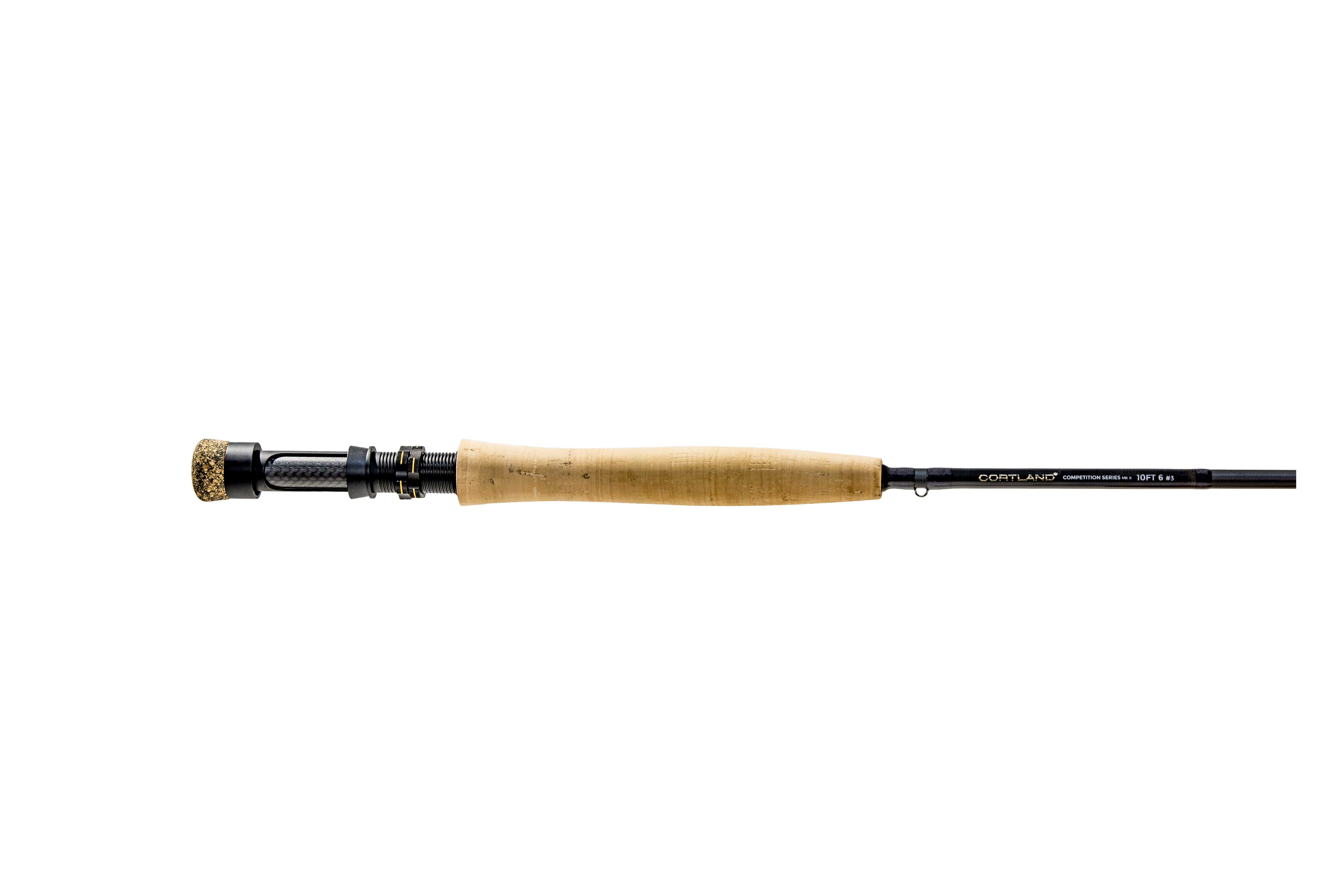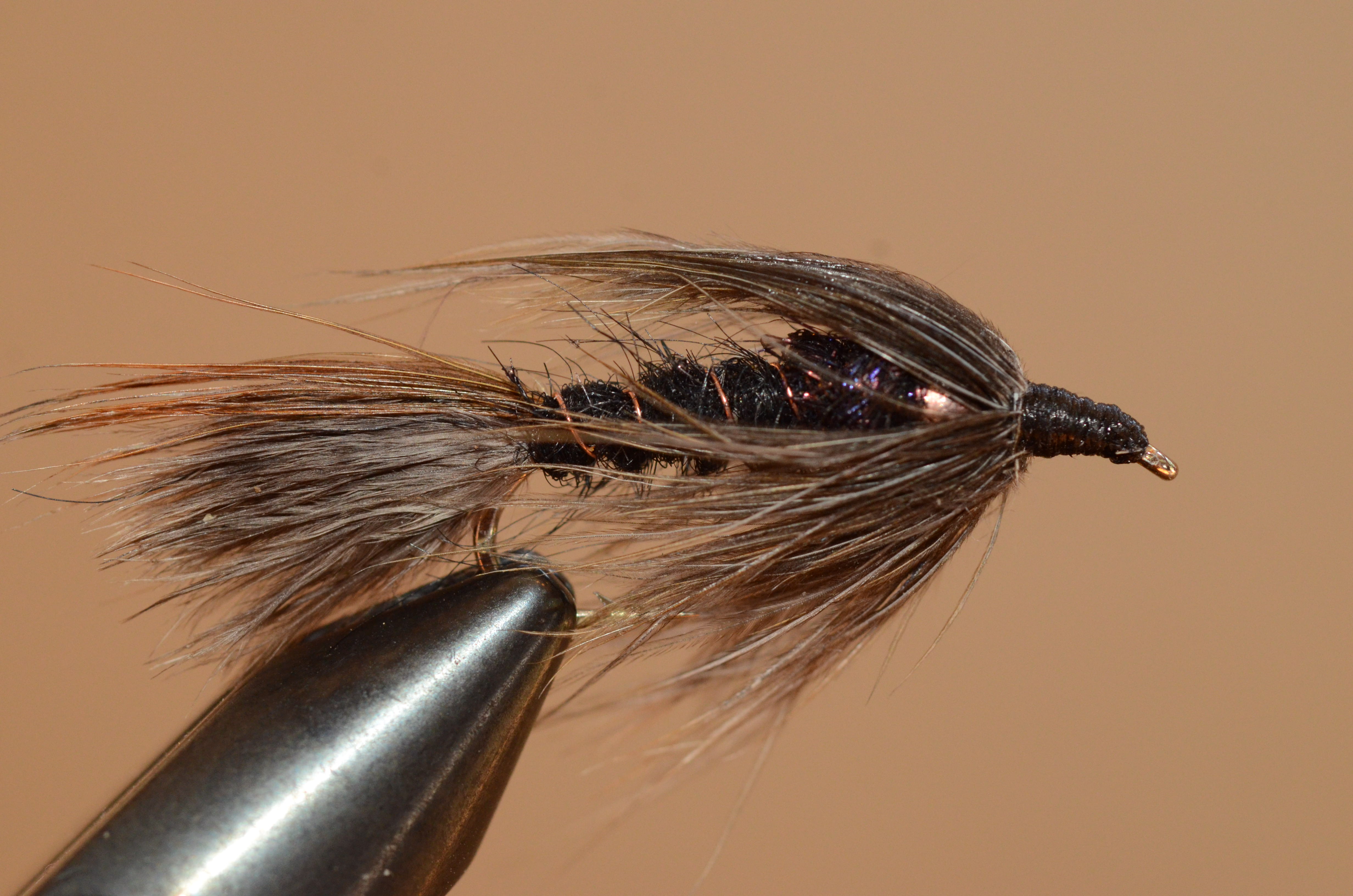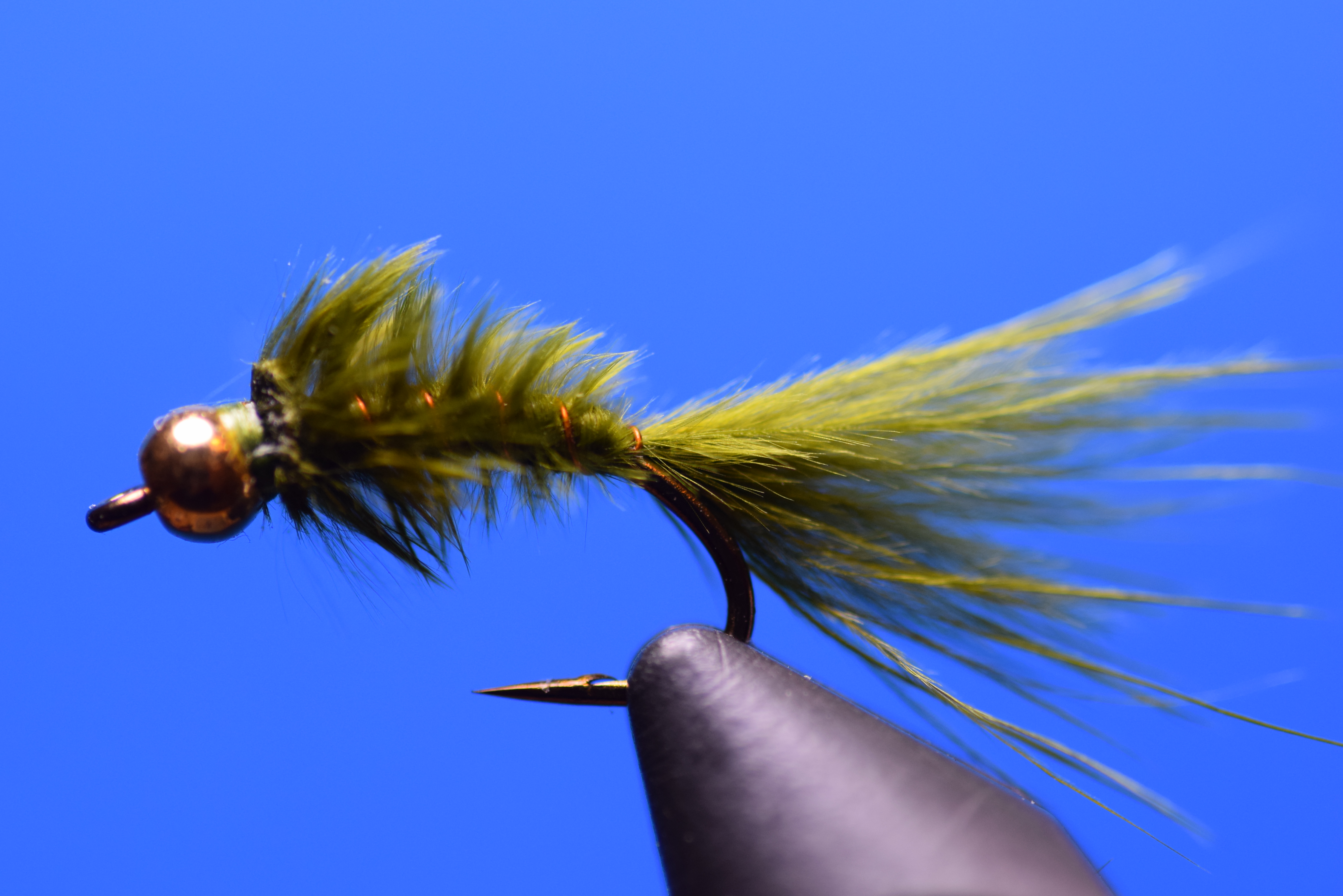An Early Season Stillwater Tip from Brian Chan

Pay attention to the shallowest areas of the shoals or littoral zones. Trout come into water just a few feet deep to chase down scuds, water boatman, juvenile damselfly nymphs and leeches. Prime shallow-water feeding areas will have some remnants of green plant growth on the bottom and might be near stands of cattails or longstem bulrush. This makes ideal habitat for the prime aquatic invertebrate food sources. Watch for fish moving in openings within stands of bulrush and cattails. In many of the most productive lakes the trout are found in shallow water for another reason: the way the oxygen is most concentrated. The lake water is still stratified at ice-off and for a number of days after. Oxygen levels in the deep water may not be sufficient to support fish life due to the considerable anaerobic decomposition of plant and other organic matter during the iced-over period. The shallow areas of the lake are mixed by wind action and oxygen levels increase. This fishing situation is known as pre-spring turnover. Consider the direction of the prevailing wind and try fishing the downwind shoal areas. A warm wind increases the surface temperatures in shallow water and can dislodge scuds and other invertebrates and concentrate them in those wind-swept areas.
Gear Review: Cortland’s MKII Competition Series

The Fly Fusion team tested the stillwater and nymph rods in Cortland’s new MKII Competition Series. Testers found the MKII Lake Rod (a 10ft, 6-wt) to perform very well on many different levels. The length of the rod provided a few advantages for the stillwater angling environment. It handled long leaders well and also provided extra leverage when sitting closer to the water in a pontoon boat. The rod also had enough backbone to handle the newer extra-weight stillwater lines. When battling larger stillwater trout, the extra length allowed for better control of the fish, which was critical when close to a doubled-anchored boat. The Fly Fusion team also enjoyed testing the 10’6”, 3-wt MKII Nymph Rod. This rod excels as a nymph rod. Even with the extra length it feels light and is sensitive in all the right places. It bends deeply and loads easily. The rod also is soft enough in the tip that testers weren’t breaking off fish at the hook set. The rod has a sharp-looking down-locking reel seat and a comfortable fighting butt for proper weight distribution. These rods will find a place in the hearts of the stillwater and nymphing crowd. (USD $675)
Tips for Fishing Soft Hackle

These days, fly anglers have a wealth of flies at their disposal, but with such a focus on innovation, it’s easy to forget about traditional methods. The humble Soft Hackle is a prime example of this angling amnesia.
Yakima’s Rooftop Tent Giveaway

Oregon-based outdoor lifestyle companies Yakima Products and Poler Stuff have teamed up for the limited-edition SkyRise rooftop tent. The Yakima X Poler SkyRise is a new take on Yakima’s popular tent, featuring Poler’s signature fuzzy camo pattern.
Light, strong and easy to use, the SkyRise is perfect for weekend warriors, outdoor festivals and more. The rooftop tent sets up in just minutes and easily makes any terrain an overnight home – from rocky ground to a festival parking lot.
Thanks to the technologically-advanced materials and features, the SkyRise does more than just let people sleep off the ground: it also provides a premium camping experience, with a light tent body made of 210d nylon, a removable cover for an unparalleled view of the night sky, plus a cozy foam mattress.
“We’ve been waiting for the perfect opportunity to partner with Yakima, and the SkyRise blew us away. It’s our ideal for outdoor living: it’s fun, eye-catching and original, and it makes you want to get out there,” said Benji Wagner, Founder at Poler. “It was really cool to collaborate with them and find a way to add some Poler flare to the rooftop tent.”
The Yakima X Poler SkyRise is available starting this month at yakima.com and select specialty retailers, as well as polerstuff.com and the brand’s flagship stores in Portland, Ore. and Laguna, Calif.
To celebrate the launch, Yakima and Poler have teamed up with for a Spring Adventuremobile Giveaway, including the new Yakima X Poler SkyRise, a Yakima roof rack system, and some Poler favorites, including the Napsack and Rucksack. The contest runs through the end of May and can be found at yakima.com. Additionally, the brands will host a launch party on Friday, April 6 at Poler’s flagship store in Portland, Ore.
RIO Offers New Salmon/Steelhead Line
IDAHO FALLS, IDAHO (April 2, 2018) – Building on the success of the InTouch Salmo/Steelhead Line, RIO Products, manufacturer of fine fly fishing lines, leaders, tippets, and accessories, brings anglers the InTouch Salmo/Steelhead F/S1 with its long hover head.
This line features a long “hovering” head seamlessly integrated into the floating rear taper and running line. The InTouch Salmo/Steelhead F/S1 sinks at one inch per second and is ideal for swinging just under the surface with small, light flies that tend to skate and for windy days when the wind can affect the swing, allowing the angler to mend and control the fly at long distances. The powerful, bullet front taper ensures the lines easily handles large steelhead and salmon flies, while the rear weight distribution makes this a great line for single handed or Spey casting.
Built with RIO’s ConnectCore ultra-low stretch core, anglers will have maximum sensitivity, control, and performance. Available in WF7F/S1 through WF9F/S1, this dual tone line comes in glacial/yellow and retails for $99.99.
The Answer to the Riddle
Riddle: What do sexy subsurface patterns, innovative nymphs, world leaders, nuclear weapons, and the photo below (by Derek Olthuis) have in common? Answer: The spring issue of Fly Fusion Magazine, where you’ll find intelligent, creative, and thought-provoking articles enhanced by the best fly-fishing photography provided by the best fly-fishing photographers. Subscribe by clicking here to join the adventure.

Book Review: Designing Poppers, Sliders and Divers

Review by Al Ritt
It was with much anticipation that I waited when I heard Steve Schweitzer was writing a new book. I own Steve’s first two publications: A Fly Fishing Guide to Rocky Mountain National Park, and A Fly Fishing Guide to Colorado’s Indian Peaks Wilderness Area (co-authored with Mike Kruise). I’ve become accustomed to his detailed, thorough and insightful approach to any project he undertakes. His newest work, Designing Poppers, Sliders and Divers did not disappoint. If anything, it exceeded my expectations. While there are a great many fly tying books available to today’s fly tier, this book is unique. Rather than a listing of photos and recipes, or restated fly-tying basics that have been written about and published for years now, this book delves into the details of constructing fly/lure styles that few before have tackled.
I say constructed rather than tied because Steve includes intricacies of using materials and methods many fly tiers are not familiar or comfortable with. I also include the term lure as it was more commonly thought of in the past. Flies such as streamers, deer hair bass bugs and others that imitated large food sources than insects were referred to as lures in earlier times. There have also been many small lures similar to those used with bait or spin casting gear that were scaled down to be cast with fly gear; these were called “fly rod lures.” Designing Poppers, Sliders and Divers covers techniques to create flies/lures using cork, wood, foam along with more commonly used materials such as hackle, rubber legs, and more.
Steve organized this book into three main sections: Tools and Materials; Elements of Design; and Making Poppers, Sliders and Divers. Beyond these primary sections, Steve has also included a thorough and informative introduction covering the motivation behind the book, the history of fly rod lures and explanation of the book’s organization and how to get the most out of it.
Section one is a very complete listing of material used for construction of bodies, dressing the lure, painting, finishing and basic materials such as thread and hooks. Each tool/material is described and its properties and uses explained. Further, availability and sources for each are also covered including information (or references to more detailed information) on how to construct some tools.
Section two of the book goes into the components of these lures and how each will affect the appearance and function of the finished lure. Here you’ll be shown everything from how to achieve a scale or other pattern on the finished lure, to how construction affects a lure’s attitude and performance in the water, to methods of combining elements such as bodies, collars, rattles, eyes and more.
Section three of the book gets into the nitty-gritty of actually forming lure bodies from various materials such as various foams, woods and cork. This section also explores a variety of methods for securely attaching bodies to hooks, painting, adding texture/color/flash and finish coating each body style.
Steve also included many “road maps” to the index that make finding and using specific information much more convenient. There is a list of tables that compare various properties of materials or design criteria, so you may quickly evaluate what will be most relevant to your current tying needs. He has included a list of specific patterns included throughout the book of patterns with step-by-step tying instructions. A list of “DYI Projects” that covers making your own specialty tools and preparing your own custom components. And for flavor, Steve has included “Artesian Galleries.” These are inserts that feature talented tiers across the country with examples of their creations. To top it off, the “maps” include “Author’s Recommendations” which refer to detailed information in the book on material or tool sources and Steve’s recommendations of which products work best for specific tasks.
In summary, Steve’s written content is detailed, well presented, easy to use, and clearly written. His photography is of very high quality and there are plenty of shots and illustrations that are large enough to adequately support his instructions and written content. Perhaps, he might have employed someone similar to one of those picture book illustrators for hire to achieve this amount of quality for the work. This book is a “must have” for anyone interested in making or simply understanding fly-fishing lures and may be applied to larger lures as well. The book is printed in full color and put together with “lay flat binding” making it very useful for your work bench and easy to reference as you go. This may be Steve’s best book to date.
Simplifying the Stillwater Equation

With the stillwater season just around the corner, there’s no better time to brush up on your knowledge than now, and who better to talk about lakes than Brain Chan.
Gear Review: Stillwater Series by Scientific Anglers

The line designers at Scientific Anglers gave their stillwater line series a facelift this year. There are five new lines for different stillwater situations. Three of them are designed to fish the upper water column. With a sink rate of one inch-per-second, the primary purpose of the Hover is to enable an angler keep the fly in the film. The Clear Camo is a stealthy line created with a muted, mottled core covered with a supple translucent coating. This is a full intermediate (1.25ips) line effective in environments where fish receive a little extra pressure. The Clear Midge Tip features a clear five-foot tip section with a sink rate of 1.25ips. Each of these surface–searching lines are designed a full line–weight heavy to aid in casting longer leaders and multiple flies. Along with the upper–column lines, Scientific Anglers also developed a couple of lines to reach fish deeper in the water column. The Seamless Density features line sections with varying sink rates allowing for consistently increasing sink rates, which in turn keeps the angler more in touch with the fly. The Parabolic Sink is created to entice trout in the lower water column. Designed to sink in a U-shape to suspend flies off the bottom, the line has a Sink 3 running line, a Sink 5 head, and a Sink 3 tip. The two deep–sinking lines have 10– and 20–foot hang–markers and are created two line weights heavy. (USD $89.95)


